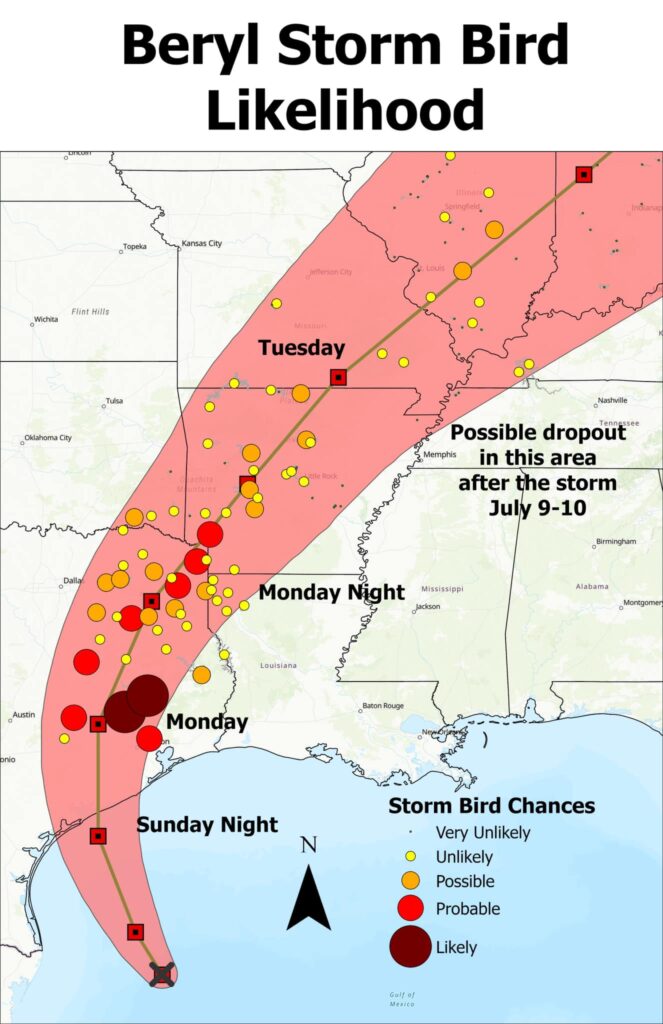Will Hurricane Beryl bring sea birds to Arkansas?

As the remnants of Hurricane Beryl pass through Arkansas, birders around the state should be on the lookout for unusual sea birds that may have been caught up in the storm’s winds and deposited onto large bodies of water throughout the state. Arkansas has a number of interesting historic sea bird records thanks to hurricanes; hurricane birds from 2008 were well documented in this paper by Doug James, Kim Smith, Joe Neal, and John Hehr. These included:
- Magnificent Frigatebird
- Royal Tern
- Bridled Tern
- Sooty Tern
- Black Skimmer
- Pomarine Jaeger
- Parasitic Jaeger
Arkansas Birder Colin Dobson has created this map that shows the predicted path of the storm remnants with large bodies of water, color-coded by their potential for hosting unusual birds as the storm passes.

Arkansas Birder Patty McClean explains, “The current path of the eye will go over Millwood and cut through Central Arkansas, exiting the state west of Jonesboro. Preliminary data shows most storm birds are found on the eastern and northern edges of hurricanes, depending on whether the birds are entrained or pushed by the storm.”
A group of Arkansas bird chasers will be posted at Millwood Lake in the Southeast corner of the state early Tuesday morning to monitor for hurricane birds, then spread out across the state to continue their search. If you live near a large body of water, you can join the search (but, as always, remember to prioritize safety first). If you see anything unusual, take detailed notes about what you observer and try to get a picture or video. Any unusual birds can be shared on social media for ID help and should ideally be entered into eBird and submitted to the Arkansas Bird Records Committee.
If interesting storm birds do show up, we’ll post a summary of those records here!
Post-storm Update!
Despite the heroic efforts of a number of Arkansas birders, we didn’t turn up an conclusive rare sea birds as a result of this storm passing through Arkansas. There was a possible Sooty Tern sighting by Patty McClean and Mike Linz on Millwood Lake, but distance made it difficult to confirm. We did note an unusually high number of Black Terns across the state suggesting that the beginning of their post-breeding migration may have been excellerated by north winds pulled in by the rotation of the storm. Extreme weather always makes for interesting birding!


